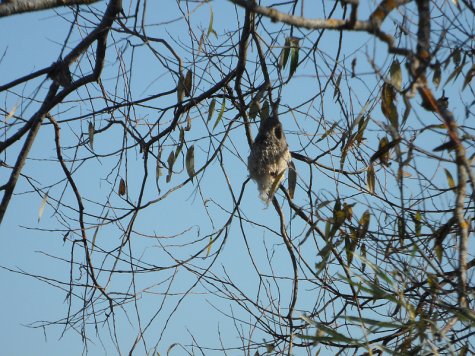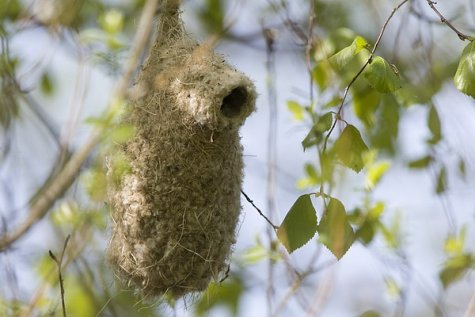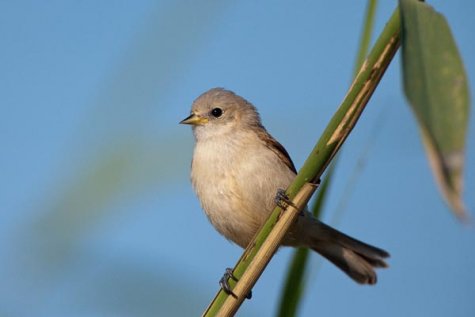With fewer leaves secrets are revealed
Photo sent by Helve, Tartu
Translation: Liis
What can be found in leaf-fall times
At the birdwatch on Saturday an interesting view opened in river Emajõgi's floodplain, in the coppice on the Porijõgi right-hand bank almost above the water: a pretty bird nest was hanging from a tree.
According to experts it was a penduline tit nest. However can they hang up such a soft and pleasant home so neatly in a branch?!
Photos: Arne Ader
Just established penduline tit nest in early May
Penduline tit Kukkurtihane Remiz pendulinus
A nest built by penduline tits survives the winter, sometimes even two, but it is not re-used. The male sometimes starts in spring by setting up several nest frames of straw; the nest construction is finished by the females when they arrive, with bulrush „cotton wool” and other suitable local materials available „at beak“. All this also determines the nesting place: broadleaf thickets in marshy areas with a rich flora where the building materials are present as well as abundant insects for the offspring. An eco-friendly lifestyle, isn’t it? The entrance to the nest is quite small, in order to avoid larger pryers. The penduline tit is our smallest tit, if it is to be compared to any then to the blue tit as size goes. Good that the pouch is hanging above water at up to a few meters height, the threat from small mammal robbers is then smaller, and the life of the incubating female and her offspring safer.
The pouches were abandoned by the owners, perhaps in early August. Penduline tits are migratory birds who winter in southern Europe; in October a passing migration in small numbers is noted.
Take a look: LINK
But consequently some attention should also be paid to its exterior.
Penduline tit on reed
Arne has photographed a young bird of this summer. There is little point in searching for similarities with our familiar tits, even the bird’s sharp and conical beak does not resemble the beaks of its relatives. The body length of the penduline tit is a little more than ten centimetres and weight about twenty grams. Head plumage pale grey, around the eyes of adults a black mask that is larger for male birds than females. Juveniles will be seen wearing masks next spring. Back plumage reddish brown and underparts yellowish white.
Skilled engineers and architects.











